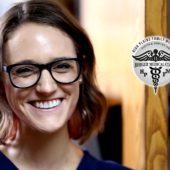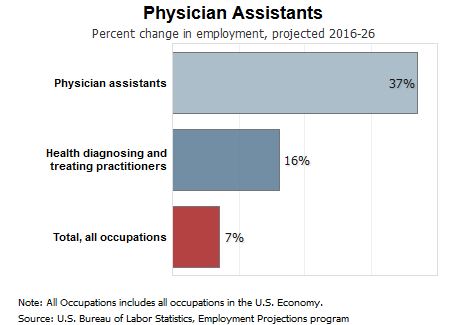Physician assistants typically do the following:
- Take or review patients’ medical histories
- Examine patients
- Order and interpret diagnostic tests, such as x rays or blood tests
- Diagnose a patient’s injury or illness
- Give treatment, such as setting broken bones and immunizing patients
- Educate and counsel patients and their families—for example, answering questions about how to care for a child with asthma
- Prescribe medicine
- Assess and record a patient’s progress
- Research the latest treatments to ensure the quality of patient care
- Conduct or participate in outreach programs, talking to groups about managing diseases and promoting wellness
Physician assistants work on teams with physicians or surgeons and other healthcare workers. Their specific duties and the extent to which they must be supervised by physicians or surgeons differ from state to state.
Physician assistants work in all areas of medicine, including primary care and family medicine, emergency medicine, surgery, and psychiatry. The work of physician assistants depends in large part on their specialty or the type of medical practice where they work. For example, a physician assistant working in surgery may close incisions and provide care before, during, and after the operation. A physician assistant working in pediatrics may examine a child and give routine vaccinations.
In some areas, especially rural and medically underserved communities, physician assistants may be the primary care providers at clinics where a physician is present only 1 or 2 days per week. In these locations, physician assistants collaborate with the physician as needed and as required by law.
Some physician assistants make house calls or visit nursing homes to treat patients.
Physician assistants are different from medical assistants. Medical assistants do routine clinical and clerical tasks and do not practice medicine.

















